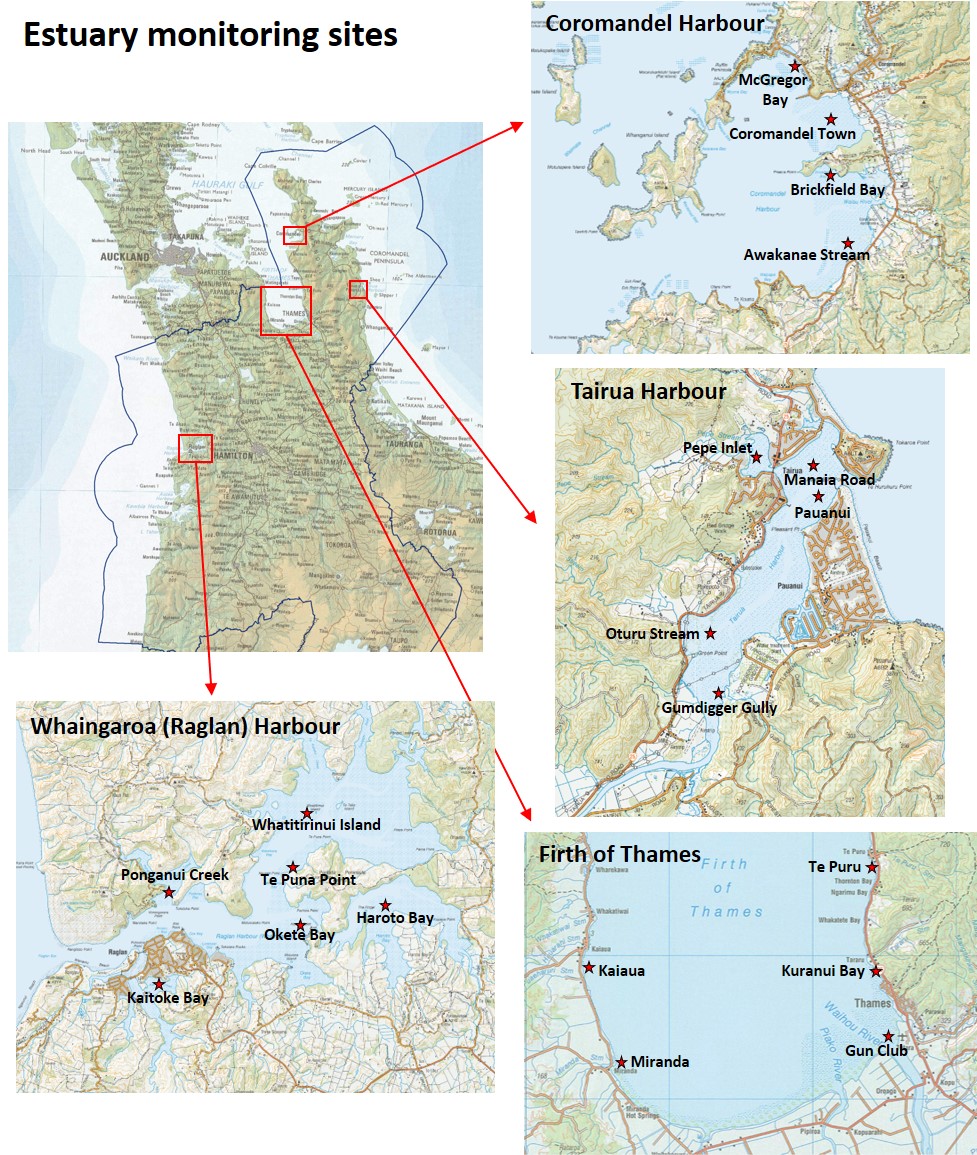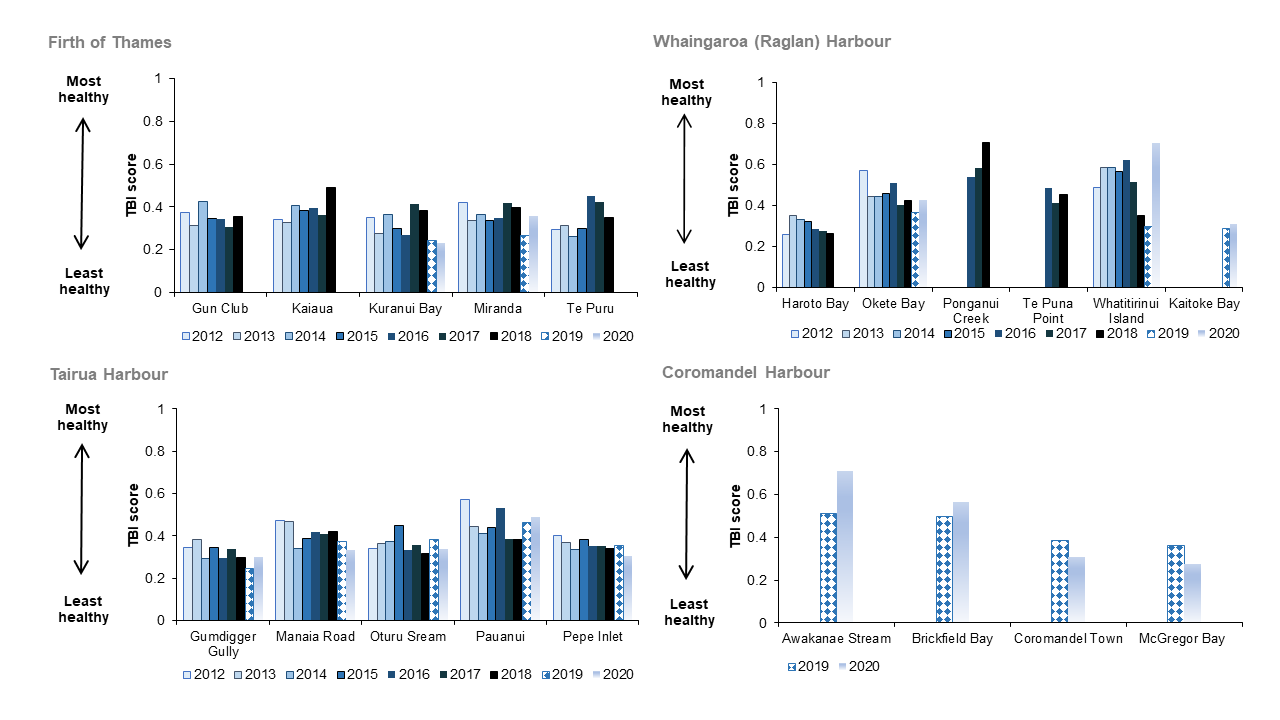Coastal biology
Why we monitor coastal biology
This indicator describes the diversity of animals that live in our estuaries. Estuaries are an important part of our coastal marine area. They are productive ecosystems, but are also one of the most sensitive coastal areas, and are at risk from human activities. Sediment-dwelling animals (such as shellfish, crustaceans and marine worms) are important in estuaries because they cycle nutrients between the sediment and water, stabilise and rework sediments, and are an important food resource for birds, fish, and crabs. Changes in the number of species and/or the number of individual animals may point to impacts from local-scale pressures such as pollution, and broad-scale pressures such as increased sediment from land use and catchment activities.
Monitoring the sediment-dwelling animals in intertidal sand and mud flats is part of our Regional Estuary Monitoring Programme (REMP). REMP is a State of the Environment monitoring programme, and its main objective is to monitor the health of the region’s estuaries. Sediment-dwelling animals and sediment characteristics are used as indicators of estuarine health. By monitoring a number of sites we aim to build up an overall picture of the state of our region’s estuaries. Long-term monitoring is essential for detecting trends in estuarine health that may be occurring.
What’s happening?
We currently monitor the sediment-dwelling animal communities in four estuaries: the southern Firth of Thames, Whāingaroa (Raglan) Harbour, Tairua Harbour, and Coromandel Harbour. The animal community characteristics are summarised by a Traits Based Index that makes use of the animals’ biological traits. Biological traits are the physical and behavioural characteristics that define a particular species (e.g. body size, mobility, feeding behaviour).
The Traits Based Index (TBI) tells us about the health of our estuaries. It ranges between zero and one, with one being most healthy and zero being least healthy. We can use the TBI to track the health of our estuary sites over time, and to compare the health of different estuaries.
This indicator shows that most of the monitored sites are moderately healthy and there were only slight changes in the TBI (and therefore in estuarine health) between 2012 and 2020.
Methods - how we monitor
Results - data and trends
Download the data file
This Excel spreadsheet contains the source data to this indicator's graph and any additional data.
When this indicator is updated
This indicator is updated annually.
Updated 29 June 2022







To ask for help or report a problem, contact us
Tell us how we can improve the information on this page. (optional)